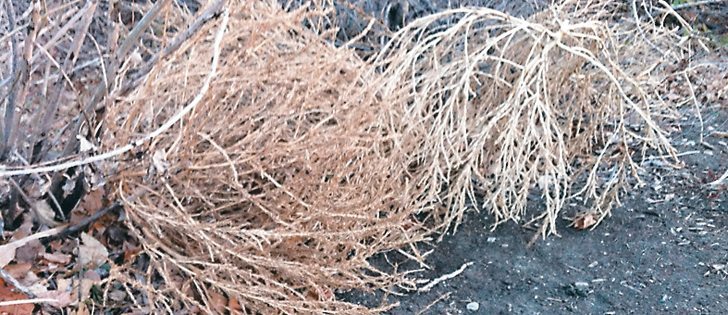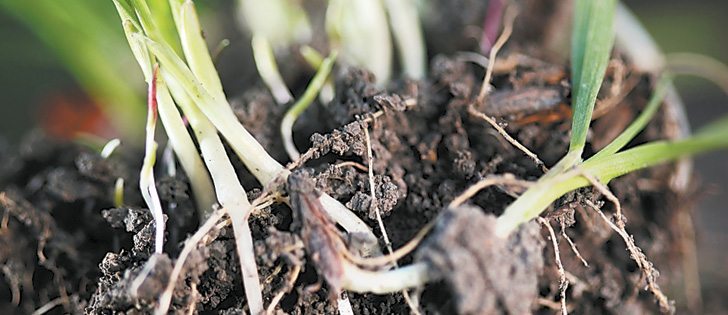MEDICINE HAT — They aren’t cowboys, but they do drift along with tumbleweeds.
And sometimes they run.
Agriculture Canada researchers Bob Blackshaw and Hugh Beckie have assigned their graduate students to chase tumbleweeds as part of research in Lethbridge and Scott, Sask.
The scientists wanted to know how far and how much kochia, a tumbleweed ubiquitous on the Prairies, spreads its seeds.
They did it by attaching GPS collars to mature kochia plants and then releasing them to the mild — or wild — winds.
Read Also

Growing garlic by the thousands in Manitoba
Grower holds a planting party day every fall as a crowd gathers to help put 28,000 plants, and sometimes more, into theground
“We go out on a windy day. I go out with three of my students and we let (the tumbleweeds) go in the wind,” said Blackshaw.
“If it’s a nice gentle wind, we walk behind them and if we have a big wind, we run like hell.”
Kochia resistant to certain herbicides is steadily spreading on the Prairies, and Blackshaw gave an update on the research Oct. 27 at a seminar organized by the Farming Smarter applied research group.
The GPS collars are worth about $1,500 each, so chasing down the weeds and retrieving the collars is important for budget as well as data.
“It was sort of fun to do. The students loved it,” said Blackshaw in a later interview.
“You learn some different technology as well. We’re already thinking about how we could use those tracking systems for other weeds or other questions that we might want to look at in the future.”
By weighing the kochia tumbleweeds before and after release, the research team could determine how much seed was released and the distance travelled.
Research teams released four tumbleweeds at a time, doing three to four runs.
“Those tumbleweeds, they might go five, 10, 15 kilometres before they get stuck in a fence line or somewhere, but the good news is that a lot of that seed is going to drop in a relatively short period of time.”
The plant drops most of its seed in the first 500 metres of travel, indicating that it’s not as likely as once thought for herbicide resistant kochia to spread easily from one farm to the next.
Blackshaw also discussed research on the persistence of kochia seed and found most of it either germinates or dies within one year.
Studies involved burying seed in nylon packages at different depths and then removing them at different times of the year to test germination.
“We’re only part way through these studies, but the good news here is that 90 percent of that kochia is going to do something in the first year. It’s going to germinate and grow, or it’s going to die.”
Another study, on seed production relative to plant maturity, revealed less positive news for farmers. Blackshaw and his team found that kochia that emerges as late as August can still produce viable seed before a killing frost that same year.
The findings show the need to be diligent in controlling the weeds, even late in the growing season.
Tumbling Tumbleweeds
I’m a roaming cowboy riding all day long,
Tumbleweeds around me sing their lonely song.
Nights underneath the prairie moon,
I ride along and sing this tune.
— Opening lyrics to a song by Bob Nolan, sung by Marty Robbins and Sons of the Pioneers


















